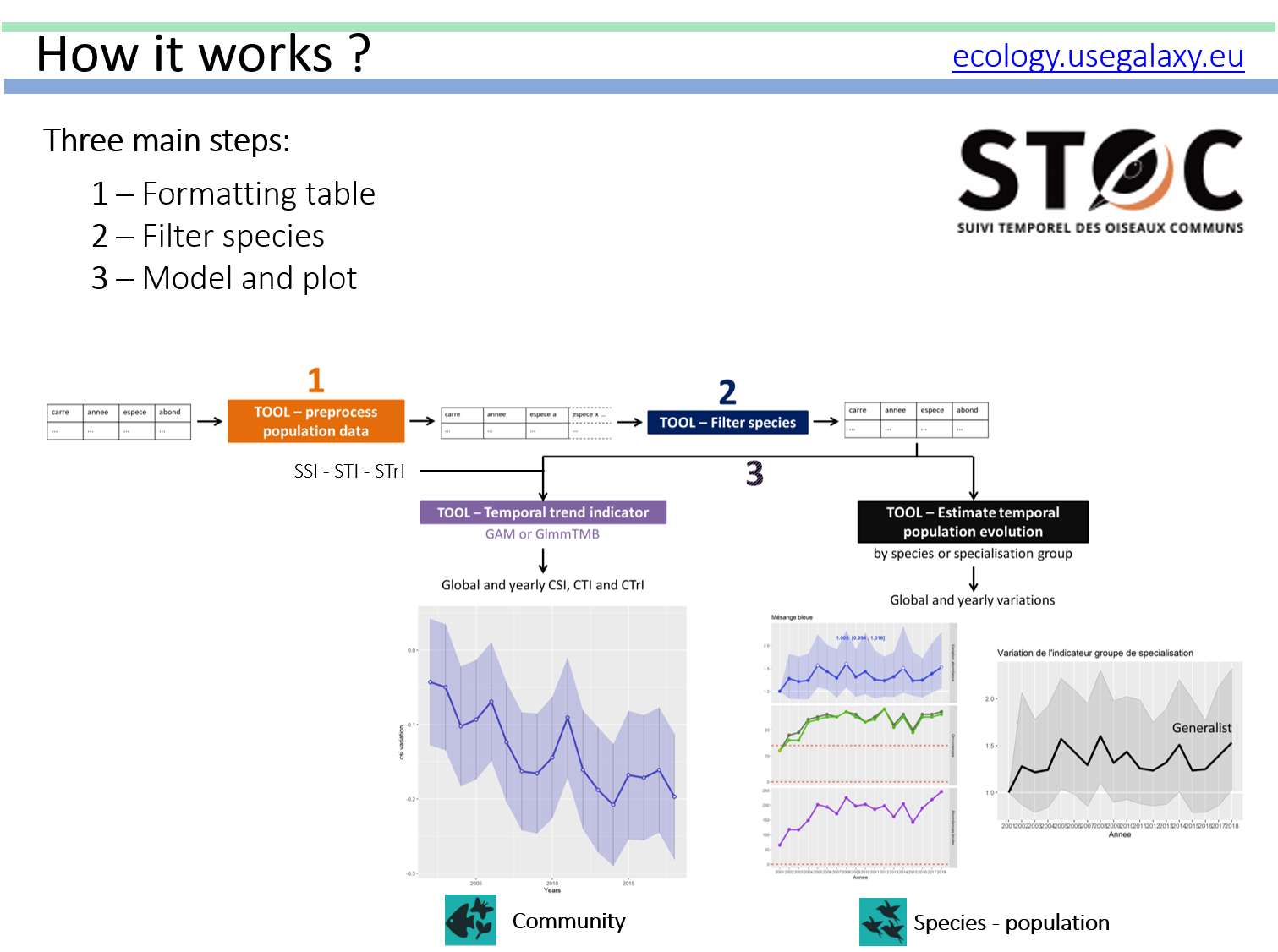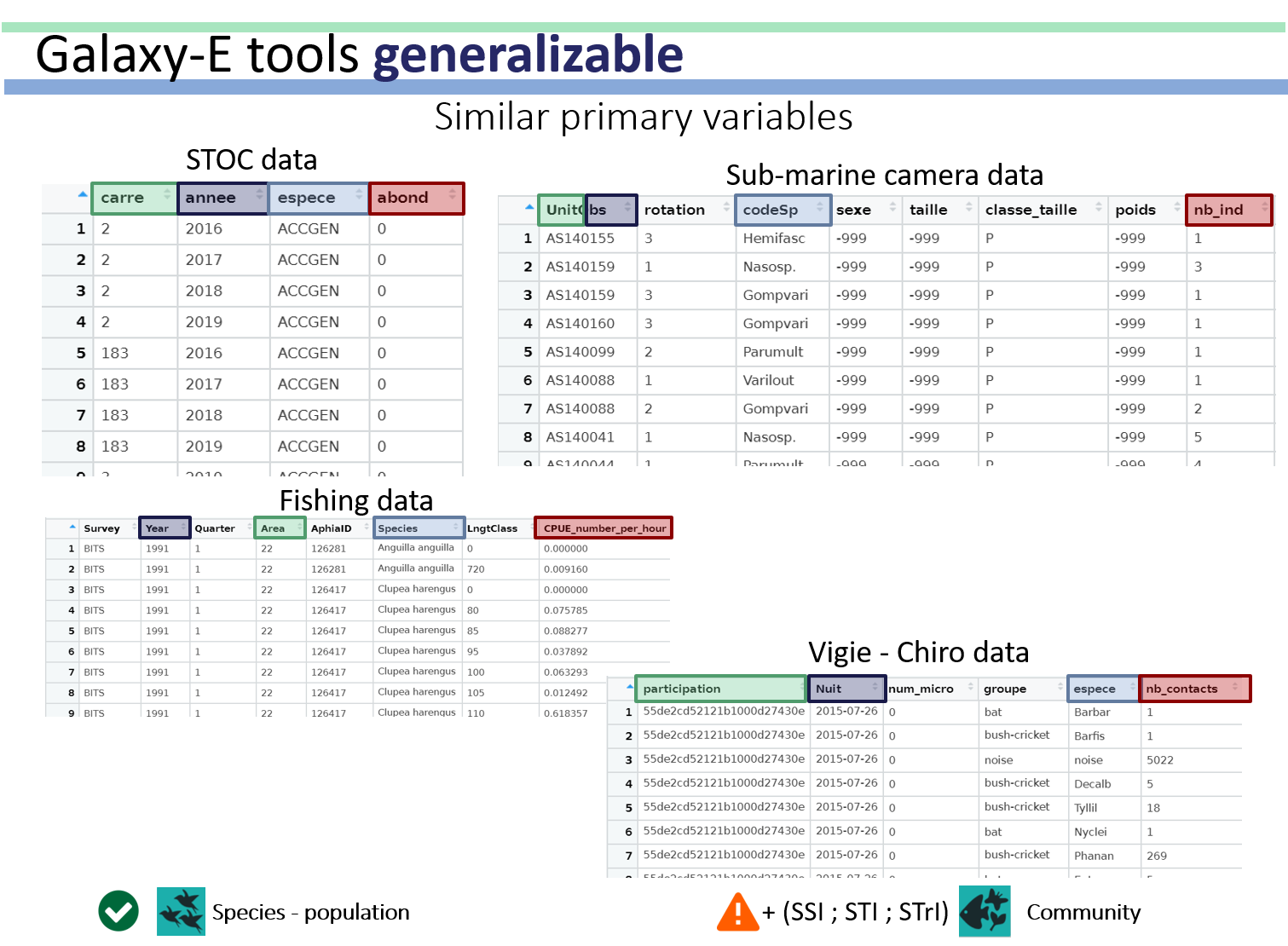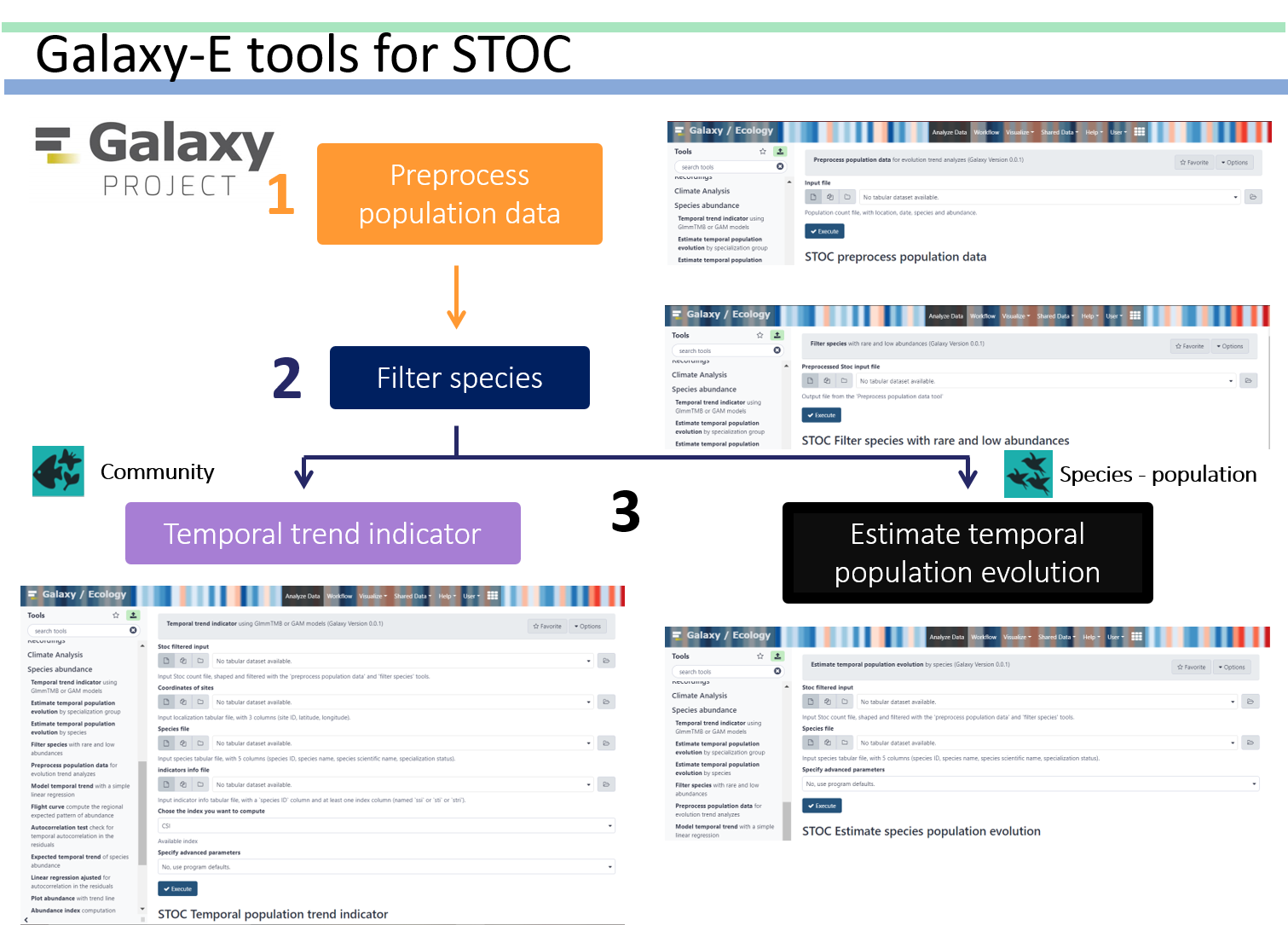At GEO BON OSC 2020 conference, Coline Royaux, french museum of natural history, presented “Galaxy for Ecology: An open source platform on academic cloud to produce and share EBV data products and EBV workflows” (conf2020.geobon.org/recordings).
Coline was describing ongoing work on biodiversity metrics and indicators production at both population and community level.
Coline was presenting first sucessfull EBV operationalization pilots on one hand for french breeding bird survey (STOC) and in another hand for marine protected areas (PAMPA). On both applications,
a particular point was to atomize and generalize each data treatment workflow so we can propose a workflow where users can consider 1/ using only some pieces of it, orchestrating it and modyfying parametrization as they want and 2/ using it even if data are not bird or MPA related.
Thus, first EBV workflow is now in fact a general CSI/CTI/CTRI indicators EBV workflow, and second one a general population (presence-absence/abundance) and community (Specific richness/Shannon index/Simpson index/Pielou index/Hill index/Relative richness) metrics analysis EBV workflow.
A lot of work has to be done on this basis to make these EBV workflows more general, notably adding possibility to deal with taxonomic distance, diversity or biomass,
but fo rnow we already have accessible, reproducible and transparent EBV workflows that anyone can use whitout having programming skills or high performance computing access.
A new phasis is starting now with H2020 EOSC-Pillar projet, where we are in charge of a use case using Galaxy-E to give access to Species Distribution Modeling oriented workflows. This will give us the opportunity to test EBV workflows deployment on the European Open Science Cloud, an amazing opportunity!



